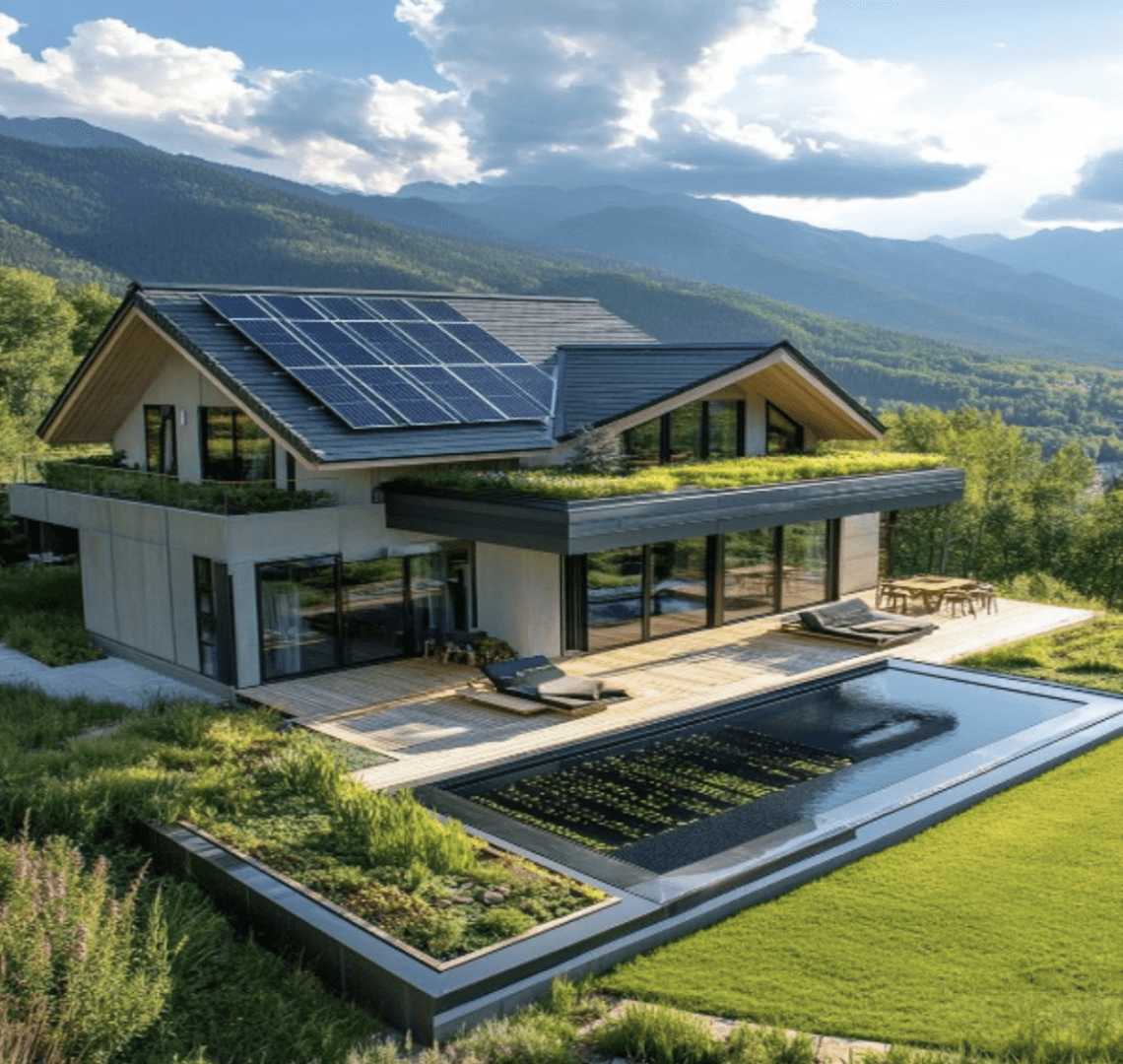Green Palisades Campaign
Facilitating 100% electric and Net Zero Energy rebuilding with full Solar Microgrid resilience
Read More
Facilitating 100% electric and Net Zero Energy rebuilding with full Solar Microgrid resilience
California residents are experiencing the growing impacts of climate change firsthand. In January 2025, the Palisades Fire tore through the Santa Monica Mountains, devastating communities in Pacific Palisades, Topanga, and Malibu. As residents begin the difficult process of rebuilding, they face crucial decisions around how to rebuild their homes to ensure sustainability and resilience. The Green Palisades Campaign (GPC) aims to facilitate sustainable and resilience rebuilds by offering super green home designs that serve as templates, featuring 100% electric and Net Zero Energy (NZE) homes that are supported by Solar Microgrids that deliver unparalleled energy resilience. Additionally, the GPC is curating a corral of green architects, builders, and other collaborators that can implement those designs into new homes for property owners in Pacific Palisades, Altadena, and everywhere beyond.
The Green Palisades Campaign (GPC) is committed to establishing a handful of super green 100% electric, NZE rebuild designs for homeowners who lost their properties in the recent Palisades Fire. These designs will not only support fire-affected residents but also serve as a widely publicized blueprint for sustainable rebuilding in the Pacific Palisades, Altadena, and beyond. Additionally, the GPC is curating a corral of green architects, builders, and other collaborators that can implement those designs into new homes for property owners in Pacific Palisades, Altadena, and everywhere beyond.
At the core of these super green designs is a commitment to 100% electric, NZE homes powered by Solar Microgrids, delivering an unparalleled trifecta of economic, environmental, and resilience benefits.
The GPC delivers a spectrum of benefits, including:
By making these designs accessible and replicable, the GPC ensures that rebuilding efforts contribute to a more sustainable and resilient future.
With a clear 5-step roadmap, the GPC aims to facilitate super green rebuilding:.
To start, the Clean Coalition will work closely with a select group of homeowners who are committed to rebuilding in a super green fashion. By showcasing their projects, these early adopters will serve as powerful examples of what’s possible when sustainable design is integrated from the ground up.
Once these homeowners are identified, the team will create initial renderings that bring these visions to life. This includes selecting electric appliances that ensure no gas hookups are incorporated in the designs. Every element will be chosen to maximize efficiency and long-term energy cost savings.
A crucial technical step in the process is performing load analyses and determining solar and battery storage sizes to achieve NZE and to maximize energy resilience during short Public Safety Power Shutoff (PSPS) events, and more importantly, for long-term grid outages during actual disasters. In the end, Solar Microgrids will be designed to deliver an unparalleled trifecta of economic, environmental, and resilience benefits.
To bring these designs to life, the Clean Coalition is assembling experienced super green designers, architects, and builders. Although the GPC is just launching, the following collaborators have already been confirmed:
Beyond the immediate rebuild, a critical goal of this campaign is scaling impact by making these super green designs widely accessible. Through strategic media outreach, key collaborations, and educational webinars, the Clean Coalition will ensure these homes serve as replicable blueprints for future super green new homes.
The campaign is actively engaging high-profile figures and organizations to maximize visibility and support. Notable target collaborators include:
Through media connections and targeted partnerships, the Clean Coalition will amplify awareness of super green building as the future standard for sustainable development.
By transforming disaster recovery into an opportunity for innovation, the GPC is proving that rebuilding after climate disasters can be smarter, cleaner, and more resilient than ever before.
Heating & Cooling
Water Heating
Kitchen Appliances
Laundry & Cleaning
Lighting & Power
Renewable Energy and Energy Storage (for energy resilience)
Other Home Systems
Site Planning: Orientation for maximizing solar benefits for electricity production and passive solar heating in the winter and shading in the summer.
Building Envelope:
Water Efficiency:
Smart Home Integration:
Column: The Los Angeles fires are no excuse to slow down on clean energy: In this article, the Los Angeles Times explores how recent wildfires in Los Angeles should not be used as an excuse to delay the transition to clean energy. While some critics argue that renewable energy sources like solar and wind are unreliable during extreme weather events, experts emphasize that distributed energy solutions—such as microgrids and battery storage—can enhance resilience and reduce reliance on a fragile grid. The piece highlights how investing in clean energy is not just an environmental imperative but also a strategic move to strengthen California’s energy security in the face of climate-driven disasters.
The latest in clean local energy
Learn about our innovative projects and initiatives on our blog, and see what others are reporting about our important work.
Facilitating 100% electric and Net Zero Energy rebuilding with full Solar Microgrid resilience
Read MoreThe Clean Coalition was a partner organization for this webinar, which took place on 30 January 2025 at 10am.
Read MoreClimate Capital & Media reports on the Clean Coalition's Solar Microgrid efforts, highlighting its role in supporting sustainable reconstruction after the LA fires.
Read article